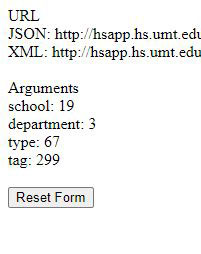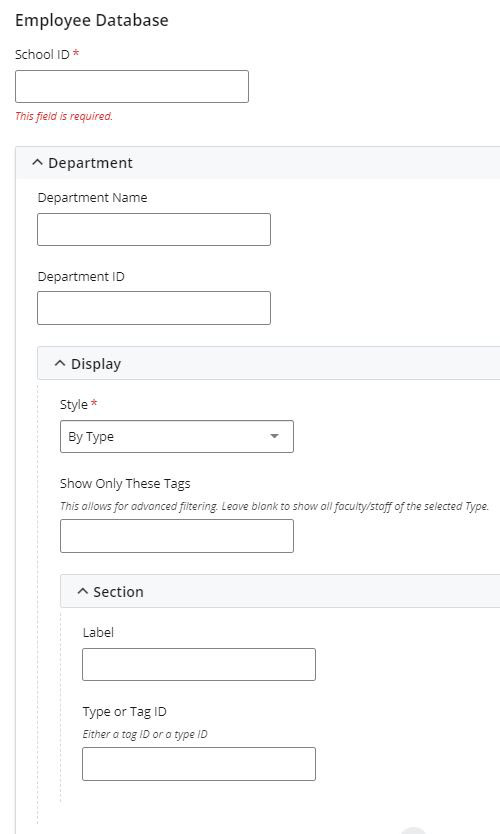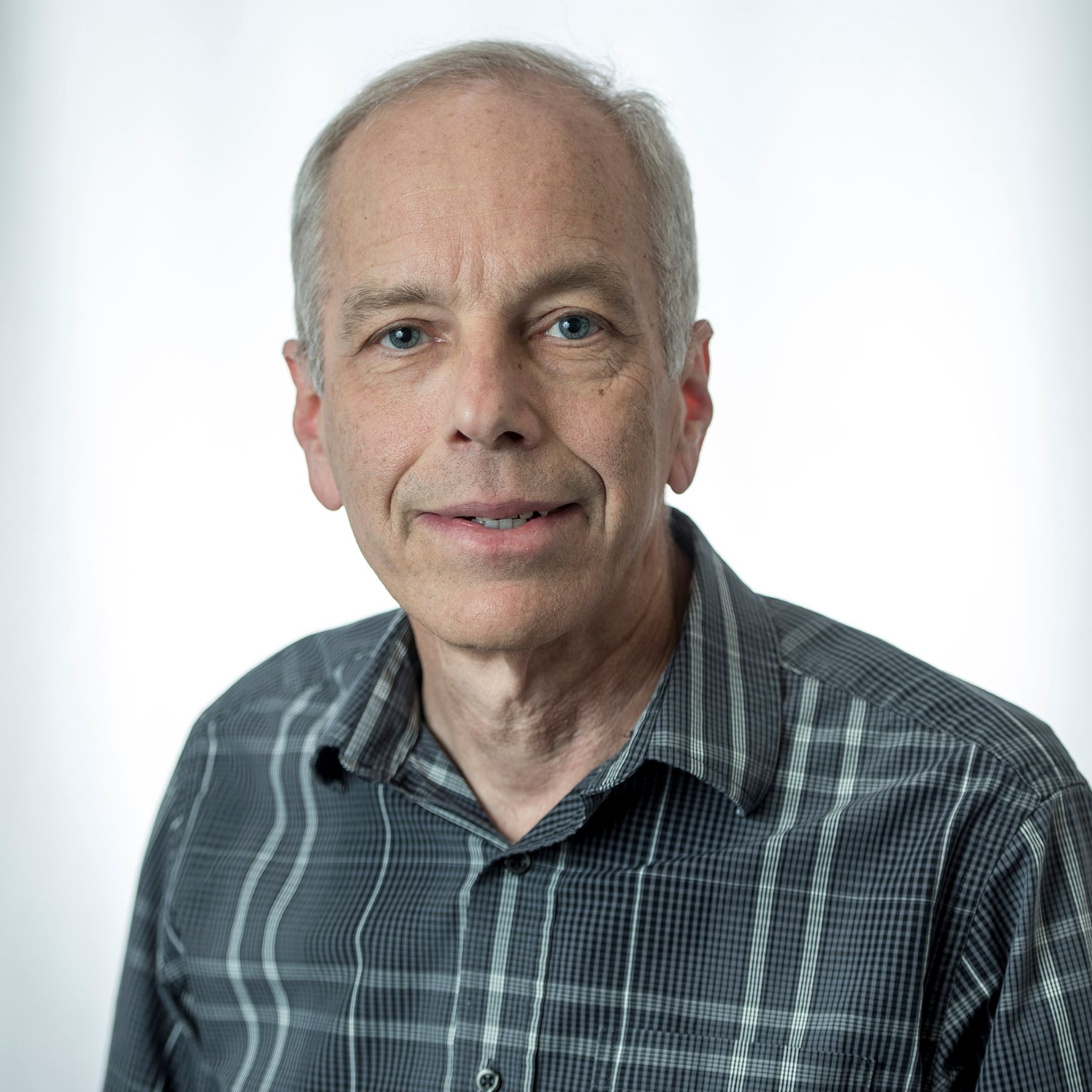Employee Database
How It Works
The employee database and its API Plugin are tools that can be used in conjunction with one another to display information about employees in campus departments. This page will walk you through using the Employee Database block on your page to display employee information.
Instructions
- Create the "Employee Database" block and add it to your site.
- Go to "Add Content" > "Blocks" > "Row Blocks" and select the "Employee Database" Block.
- Navigate to the Employee Database API Plugin and retrieve the numerical codes to enter into the Block.
- Select the "School" or "College" you are looking for.
- Select the "Department" you are looking for.
- Select the "Type" of employee you are looking for.
- Select the "Tag" associated with that employee Note: Some departments don't use tags, the query will revert to "Type" if this is the case.
- Take note of the numerical values of the School/College, Department, Type and Tag produced by the API.
- Back in Cascade, edit the "Employee Database" block you created. Enter the information generated from the API into the appropriate fields.
- Submit your changes.
- Publish your changes. NB: the Employee Database block does not display fully in Cascade, but only on the live site. Cascade will only display the numerical values retrieved from the API.
Breakdown of the API codes.
- School ID: Each school within the database is referenced by a unique ID.
- Department ID: In combination with the school ID, this identifies your department within the Faculty Database.
- ID(s): Each person in the system is associated with a personnel "type" (Professor, Adjunct, Staff, etc.), and you can filter by these IDs.
- Tag ID(s): Some departments choose to further categorize by research area or specialty with tags.


The section below is an example of what you should see after attaching the employee database block.
John Douglas
Professor
Contact
- Office
- Social Science 233
- john.douglas@umontana.edu
- Office Hours
Throughout the academic calender, I have a generally flexible schedule to meet with students and colleagues using Zoom. Please email me some suggested times, and I will get back to you with a meeting link.
Note that I am not accepting new graduate students.
- Curriculum Vitae
- View/Download CV
Personal Summary
John Douglas is an anthropological archaeologist with diverse experiences and interests. He earning a doctorate at the University of Arizona (1990) and began teaching at The University of Montana in 1991. His long-standing areas of expertise are the native people and prehistory of northwest Mexico and the U.S. Southwest. He has been a pioneer in examining the archaeology of northeast Sonora and southeast Arizona, through survey and excavation, in the context of late prehistoric social complexity, considering the effects of the site of Paquimé in northwest Chihuahua on those areas.
More broadly, a major transformation of the human condition was the development of hierarchical societies, and Douglas' research addresses that topic. The hierarchical society centered at Paquimé is one of the three most important in the U.S. Southwest-Northwest Mexico (the others being Chaco Canyon and the Hohokam). Much of John Douglas' research on the region focuses on interactions and exchange systems between societies of varying scales in the region and addresses how "cores" and "peripheries" emerge in agricultural societies.
His current research builds on this work by reexamining the archaeological and Spanish documentary evidence for the Indigenous peoples in present-day northwest Chihuahua in the sixteenth and seventeenth centuries, the time of the Spanish Colonial expansion. At present, this exploration is based on library and museum resources and broadly considers the events and Indigenous people of the Casas Grandes Valley after the abandonment of the site of Paquimé. Specifically, the study focuses on the origins of the "Suma" in the Valley (a group known only from their Spanish Colonial name). The research began during a spring 2021 sabbatical.
A separate area of research is the Classic Maya southern lowlands. Sparked by a long-standing interest and related experiences, including regularly teaching a course on Mesoamerica and a 1994 faculty exchange to Belize, he co-taught the UM archaeological field school at Cahal Pech, a publicly interpreted Mayan center in western Belize, from 2011 to 2019. The field school was offered in conjunction with the Belize Valley Archeological Reconnaissance (BVAR), a Belizean research group, and was held during the winter session. He has a continuing interest in the transformations occurring the upper Belize Valley at the end of the Classic Period, the Terminal Classic.
Additionally, John Douglas has participated in a range of other archaeological projects. From 1988 to 2009, he participated in fieldwork and analyses for the lower Amazon Basin Project, working with sites ranging from the Paleoindian period to European contact-era chiefdoms in Brazil. From 2000 to 2001, he co-taught a field school at the nineteenth century mining town of Virginia City, Montana while developing a preservation plan. John has been part of excavation or survey teams in California, Washington, a Neanderthal site in southwest France, and a stone age site in the Central African Republic.
Douglas' methodological skills include field mapping at various scales and GIS map creation, analyzing radiocarbon dates, and the analysis of artifacts, particularly ancient ceramics, but also chipped stone and historic artifacts. Topical interests include regional systems and exchange, identifying and understanding social organization and scale from the archaeological record, and chronology building. He teaches a variety of method and theory courses as well as regional archaeology courses for North America and Mesoamerica. Finally, he works with graduate students as an advisor or as a committee member on a large range of anthropological topics, both within his research focus and outside of his specialties.
Education
University of Arizona, Tucson 1990 Ph.D. in Anthropology
University of Arizona, Tucson 1982 M.A. in Anthropology
California State University, Fullerton 1978 B.A. in Anthropology
Courses Taught
Classes AY 23-24:
Autumn 2023: Introduction to Archaeology, ANTY 250 (online)
Spring 2034: North American Archaeology, ANTY 351 (online
Research Interests
Archaeology; regional systems and exchange; social organization; chronology building; ceramic analysis; the American Southwest and Northwest Mexico; the Maya Lowlands; the Americas
Selected Publications
2023 (J.E. Douglas, L.J. Brown) "Reevaluating the Suma Occupation in the Casas Grandes Valley, Chihuahua, Mexico." American Antiquity 88(2):125-143. https://doi:10.1017/aaq.2022.105
2021 (J.E. Douglas, B.L. MacDonald, C.E. Ebert, J.J. Awe, L.Dussubieux, and C.E. Klesner) "Fade to Black: The implications of Mount Maloney Black pottery from a Terminal Classic deposit, Cahal Pech, Belize, using a comparative multi-method compositional approach." Journal of Archaeological Science: Reports, Vol. 35. https://doi.org/10.1016/j.jasrep.2020.102666
2020 (J.J. Awe, C.E. Ebert, J.A. Hoggarth, J.J. Aimers, C. Helmke, J. Douglas, and W.J. Stemp). “The Last Hurrah: Examining the Nature of Peri-Abandonment Deposits And Activities At Cahal Pech, Belize.” Ancient Mesoamerica, 31, 175-187. https://doi.org/10.1017/S0956536119000233
2016 (J. Douglas and A. MacWilliams) “Casas Grandes and Its More Distant Neighbors.” In Discovering Paquimé, edited by Paul E. Minnis and Michael E. Whalen, pp. 47-52. University of Arizona Press, Tucson
2015 (J. Douglas and A. MacWilliams) “Society and Polity in the Wider Casas Grandes Region.” In Ancient Paquimé and the Casas Grandes World, edited by Paul E. Minnis and Michael E. Whalen, pp. 126-148. University of Arizona Press, Tucson.
2015 (J. Douglas, L Brown, and J. Awe) “The Final Occupation: The Terminal Classic Evidence from Plaza H, Cahal Pech, Belize” In Research Reports in Belizean Archaeology, Vol. 12, pp. 217-225.
2011 (A.C. Roosevelt, J. Douglas, and others) Early New World Monumentality, Edited by R.L. Burger and R.M. Rosenswig, p. 255-288, University of Florida Press, Gainesville.
2007 “Making and Breaking Boundaries in the Hinterlands: The Social and Settlement Dynamics of Far Southeastern Arizona and Southwestern New Mexico.” In Hinterlands and Regional Dynamics in the Ancient Southwest, edited by Alan P. Sullivan III and James M. Bayman, pp. 97-108. University of Arizona Press, Tucson.
2004 “A Reinterpretation of the Occupational History of the Pendleton Ruin, New Mexico.” Journal of Field Archaeology 29 (3-4):425-436.
2002 (A. Roosevelt, J. Douglas, and L. Brown) “The Migrations and Adaptations of the First Americans: Clovis and Pre-Clovis Views from South America.” In The First Americans: The Pleistocene Colonization of the New World, edited by N. G. Jablonski, pp. 159-223. Wattis Symposium Volume 4, Memoirs of the California of Sciences, No. 27. Academy.
1995 “Autonomy and Regional Systems in the Late Prehistoric Southern Southwest.” American Antiquity 60(2):240-257.
Affiliations
Society for American Archaeology
Arizona Archaeological and Historical Society
International Experience
- Belize (University of Belize, Belize City), as exchange professor and supervising archaeological excavation/field school in San Igancio, Cayo District
- Mexico (Sonora), as co-Principle Investigator archaeological survey and excavation
- Brazil (Pará), as Fulbright supported archaeology instructor and specialist/consultant
- France (Charente) as Excavation Director / Computer Mapping Specialist
- Central African Republic (Sangha) archaeology specialist/consultant

